Birding or birdwatching is the activity of observing our feathered friends using sight and sound. Birds are unique creatures with entertaining behaviors and melodic songs. Simply watching them can be a fun pastime and even community participation in scientific research. Birds migrate south for the winter to seek warmer weather and food sources. Alabama contains more species of birds during the winter than during the Summer. Our state houses all kinds of birds via its majority of ecologies from the Gulf coast to the Appalachian Mountains. Below is a simple, pictured birding guide for Alabama.
- The Northern Cardinal is one of the most common birds in Alabama. Males have bright red plumage, and females are typically brown to orange. Both sexes have a head crest with a thick orange beak surrounded by a black patch.
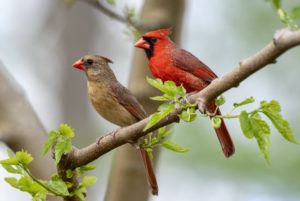
- The Red-bellied Woodpecker may be heard before it is seen. They are small in size with a red head, red belly, and black wings with white stripes. They nest and forage for insects in trees, producing a rhythmic knocking.
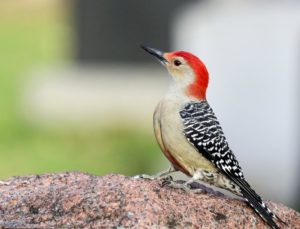
- The Northern Flicker is Alabama’s state bird. It nests in trees and can be identified by the red streak on its cheek, black chest patch, and black spots on its brown body.
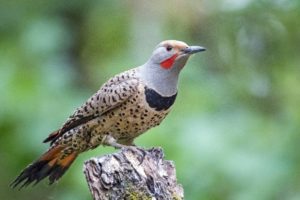
- The Cedar Waxwing can be found snacking on berries from fruit bushes. It has a characteristic bold black stripe on its eye, body plumage is brown that fades into gray, and the tip of its tail is bright yellow.
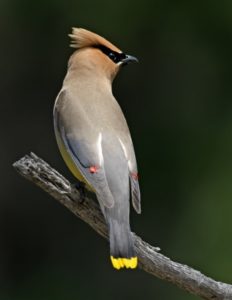
- The Pileated Woodpecker is a large bird that eats insects from rotting trees. It has black plumage on its body with red on top of its head.
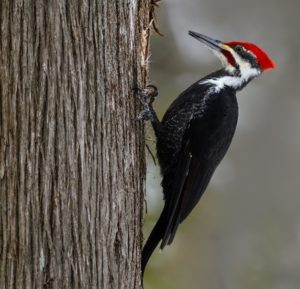
Want a closer look at birds? Check out the featured feathered critters for a limited time in our temporary exhibit hall: Ducks, Dogs, and Decoys. To see more, take a stroll through our Birds of Americas exhibit hall or Bird of Prey Trail at Anniston Museum of Natural History.

